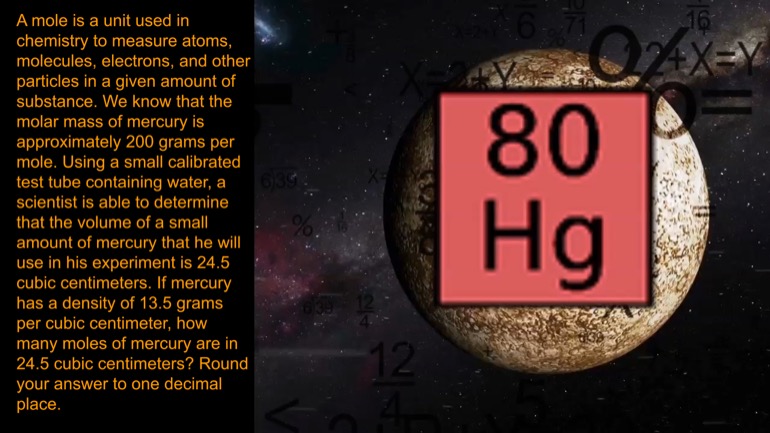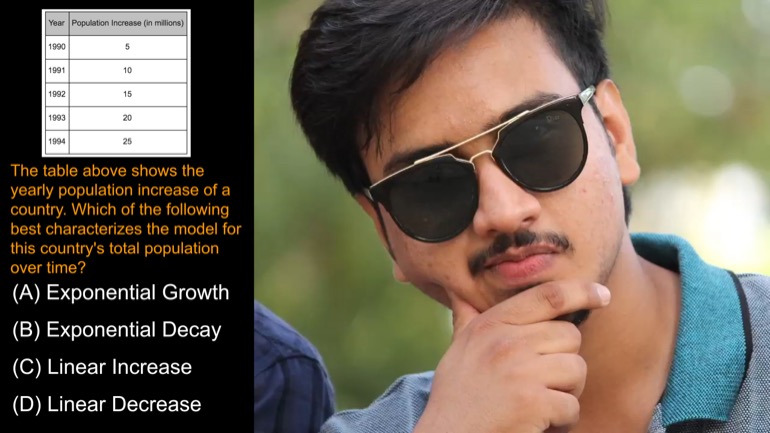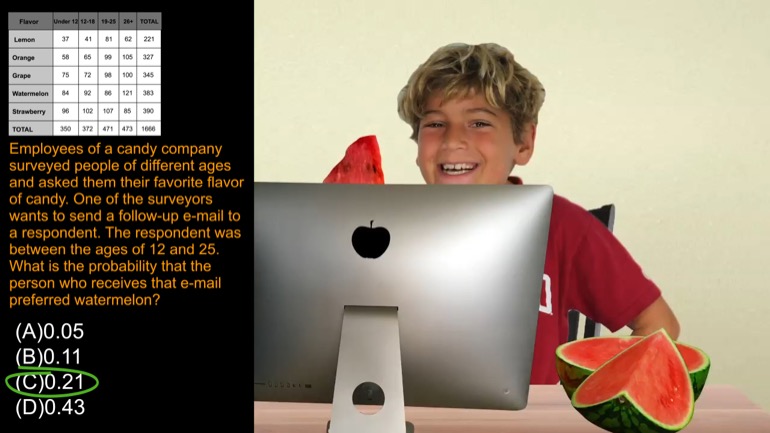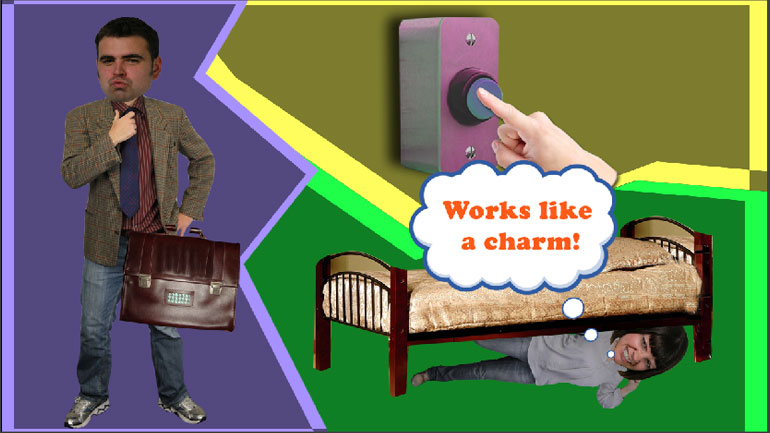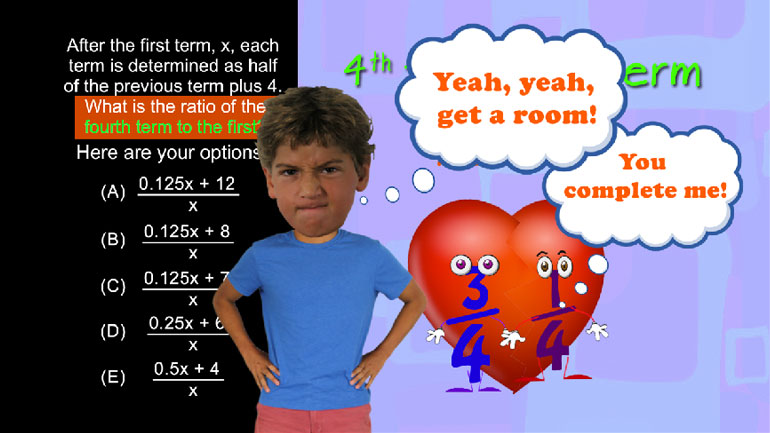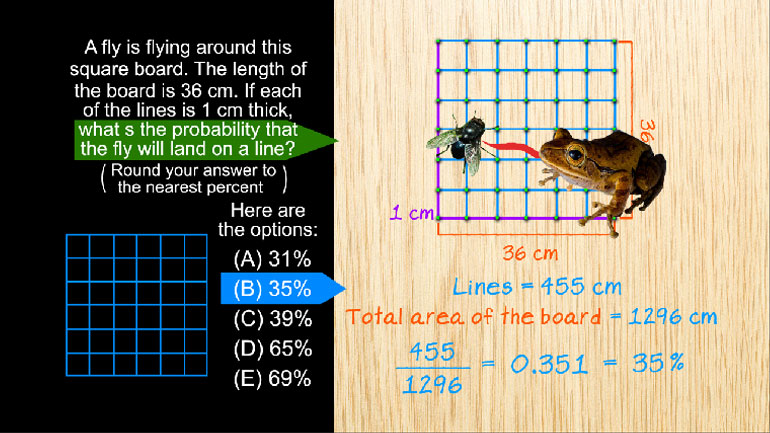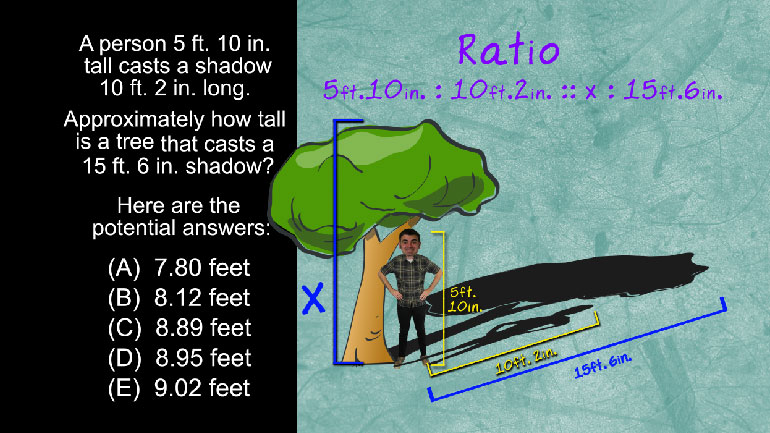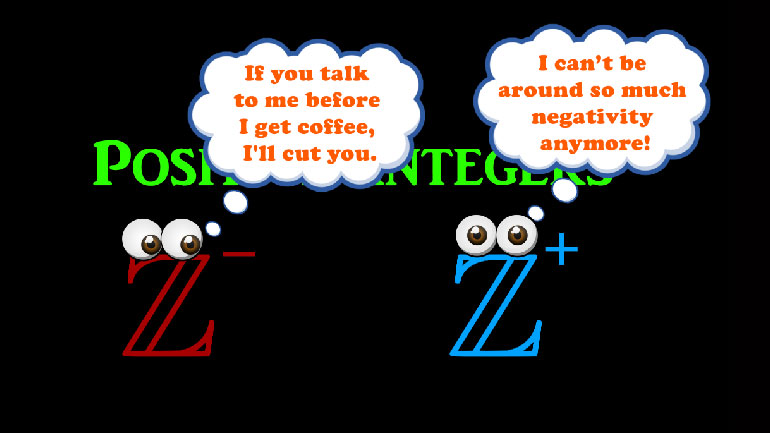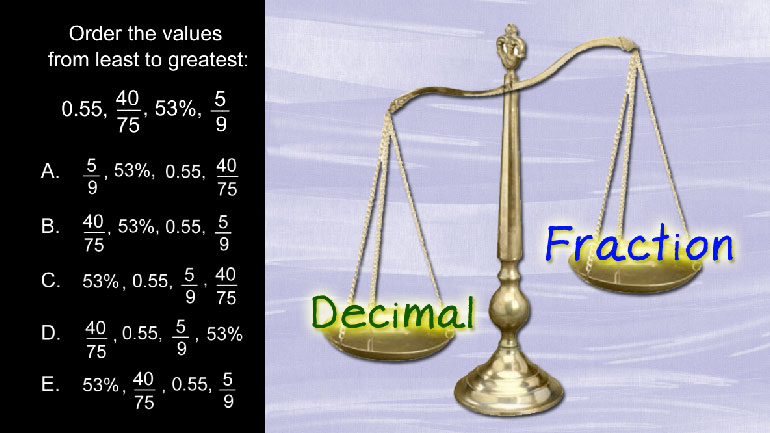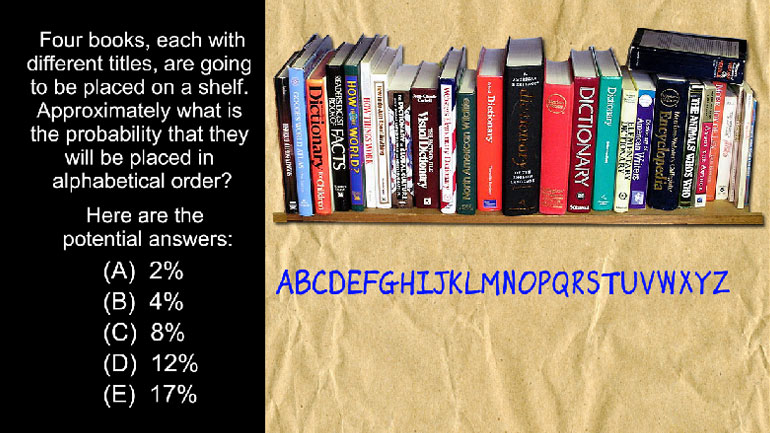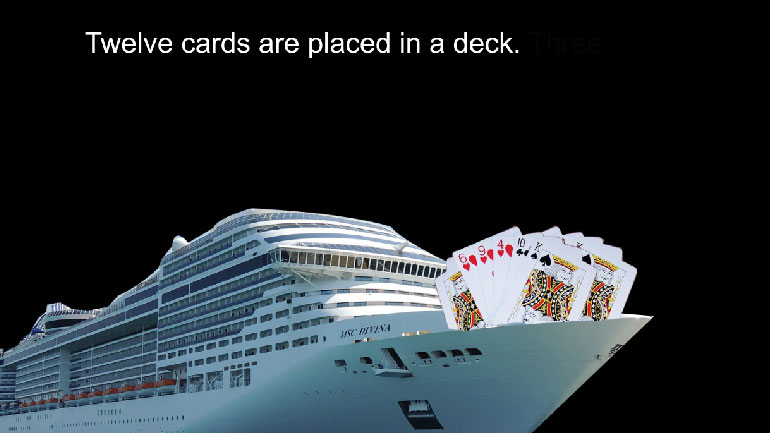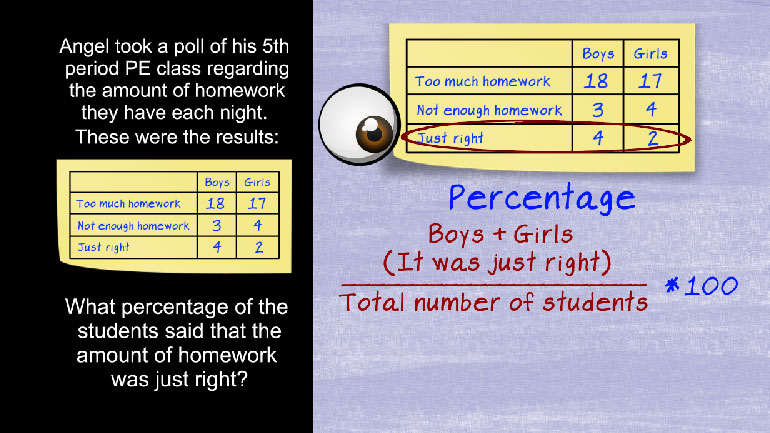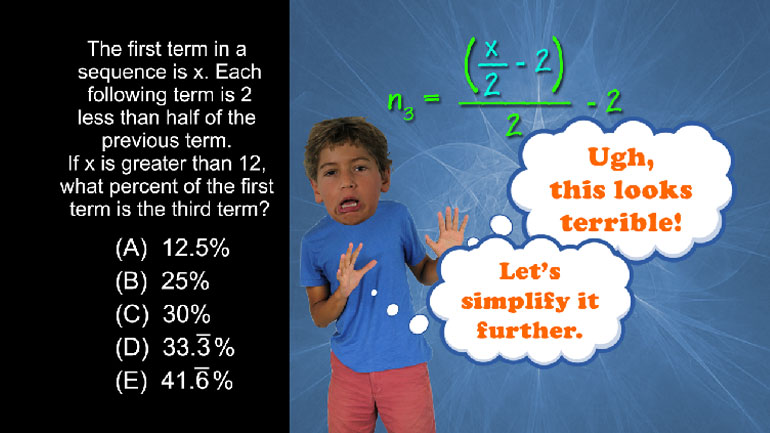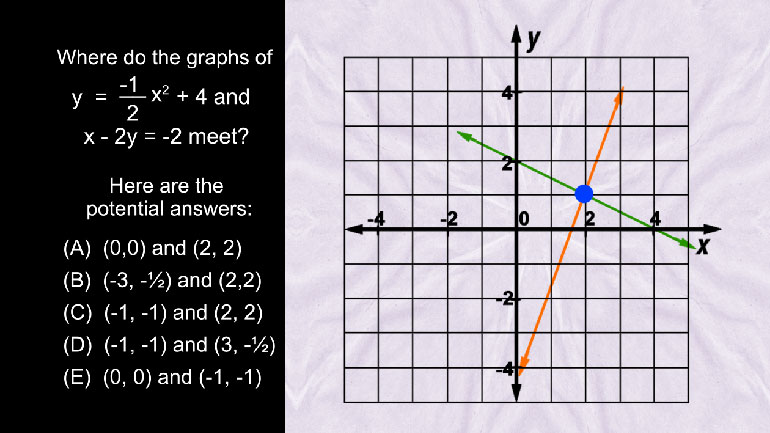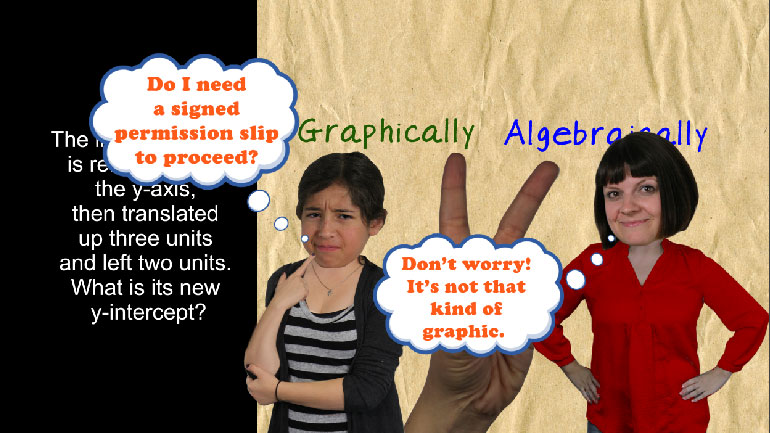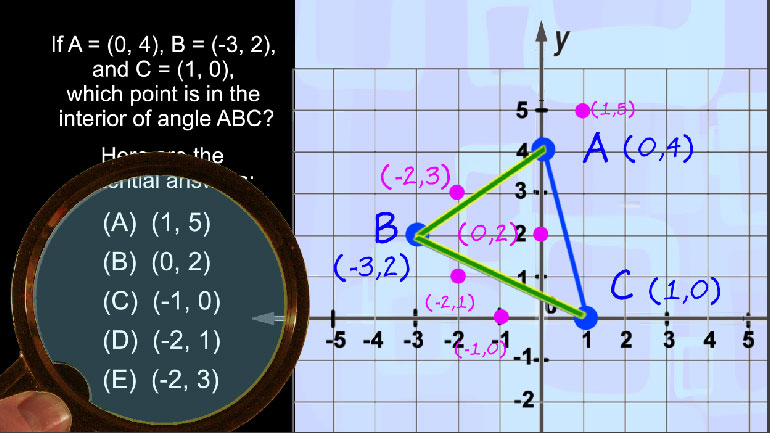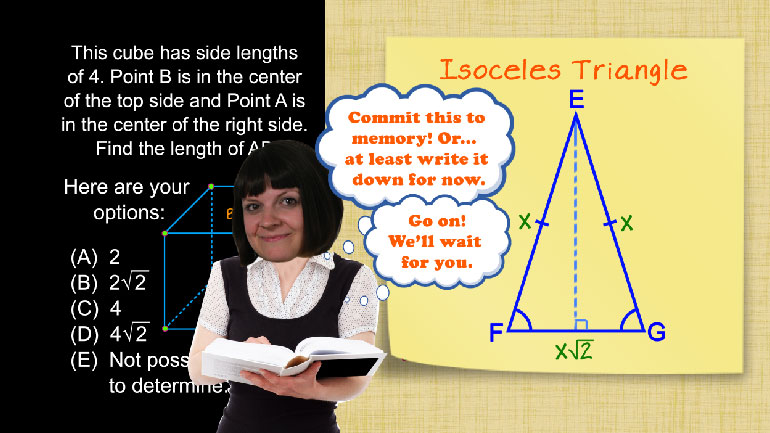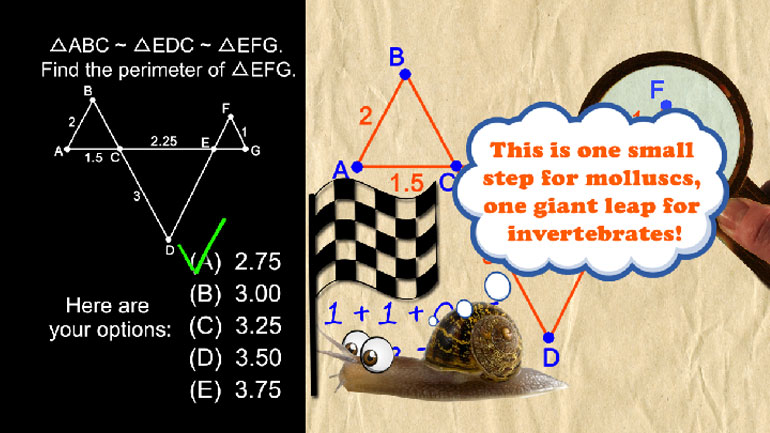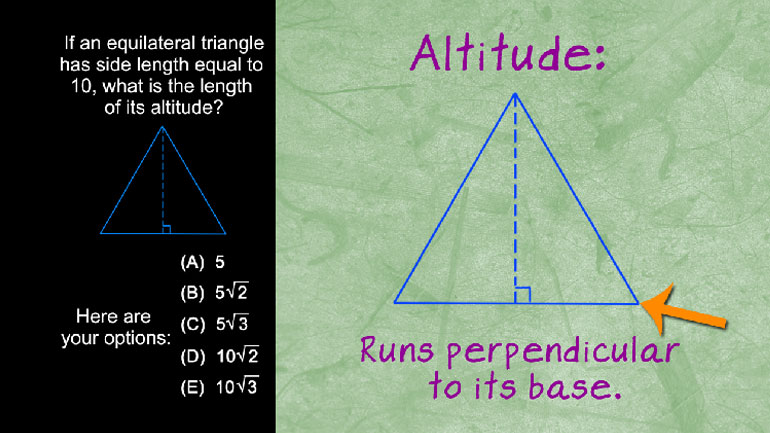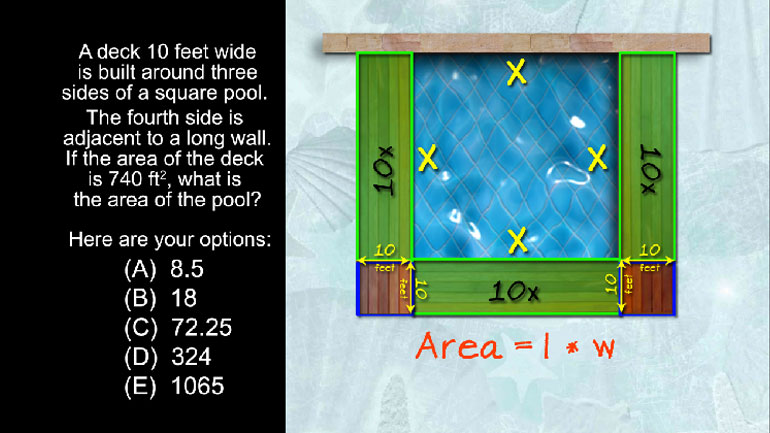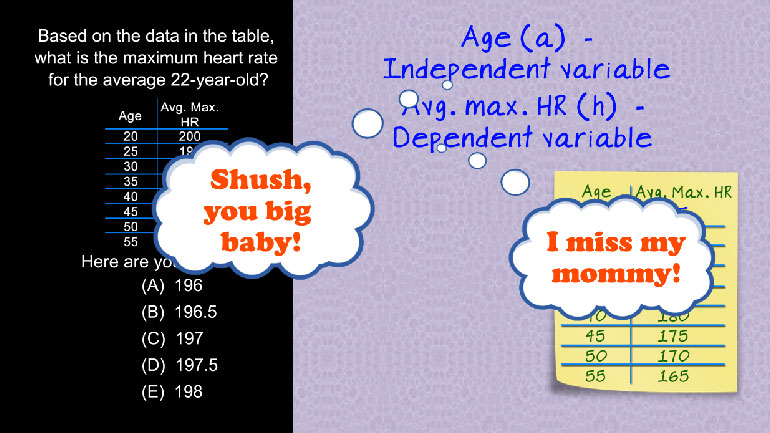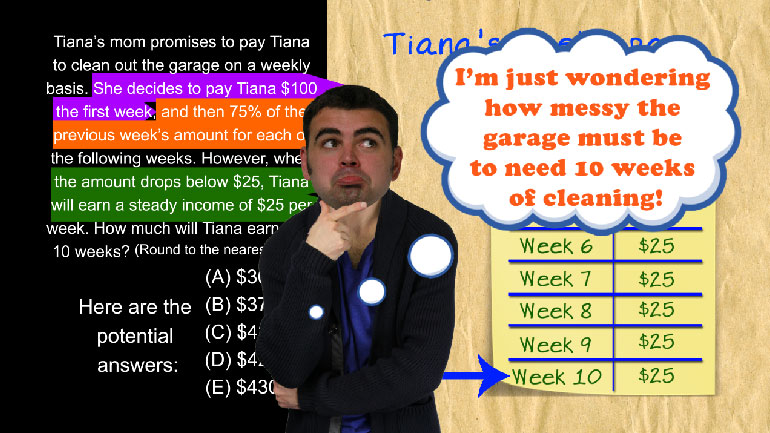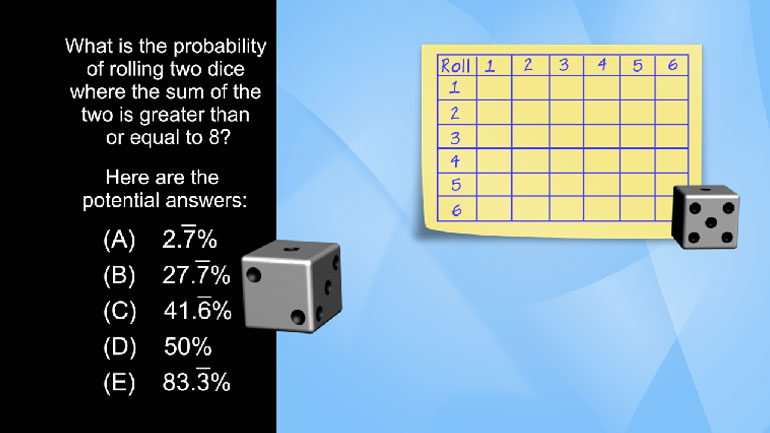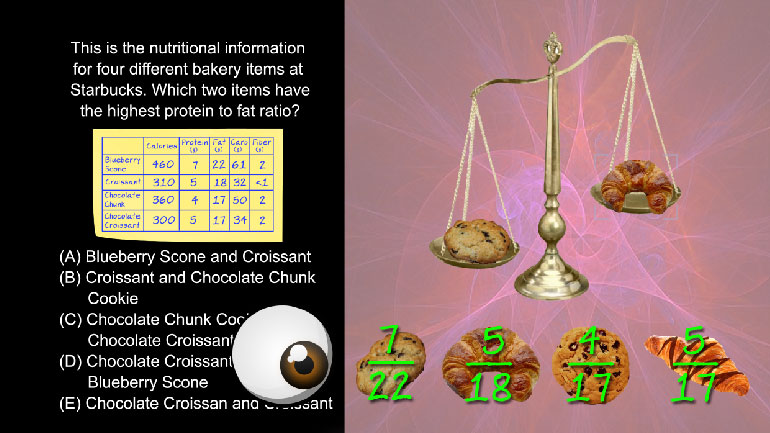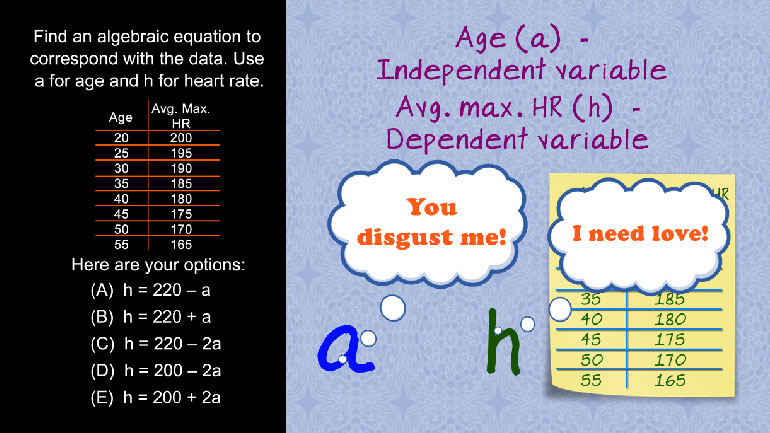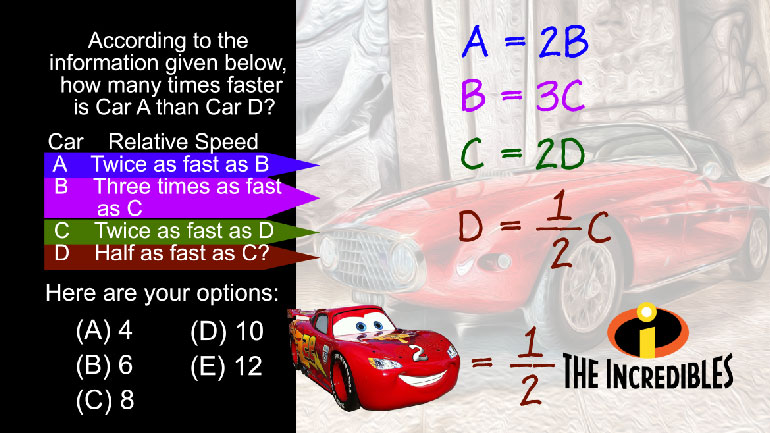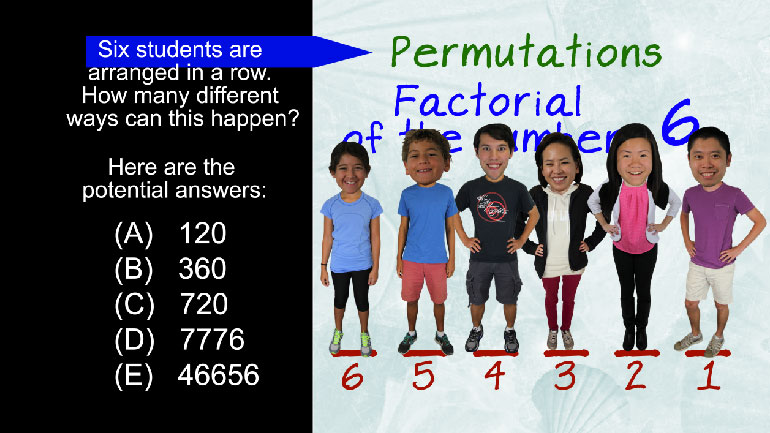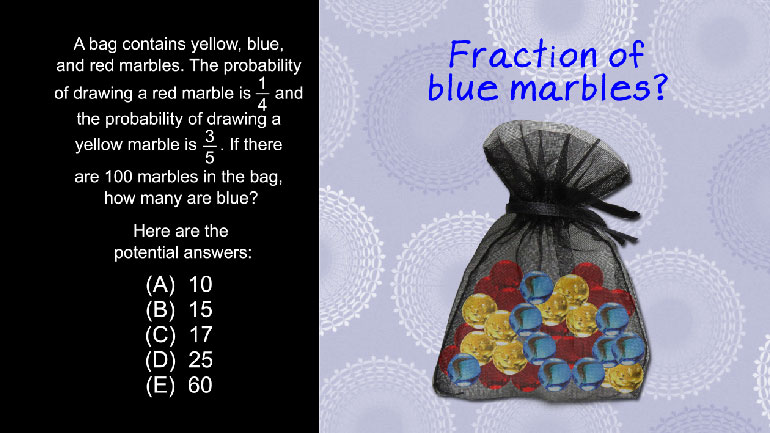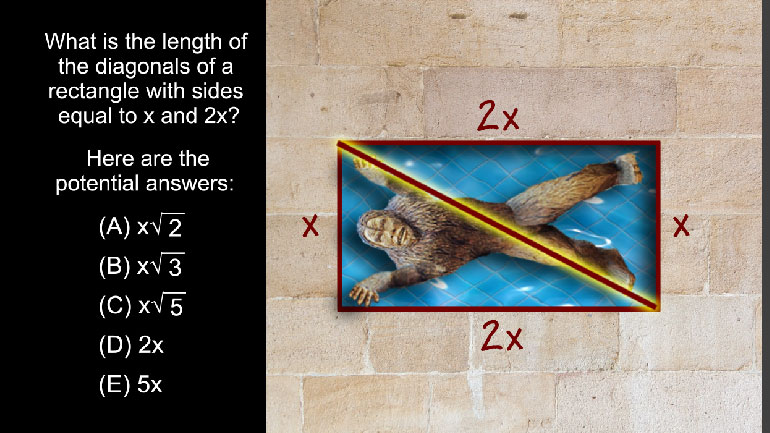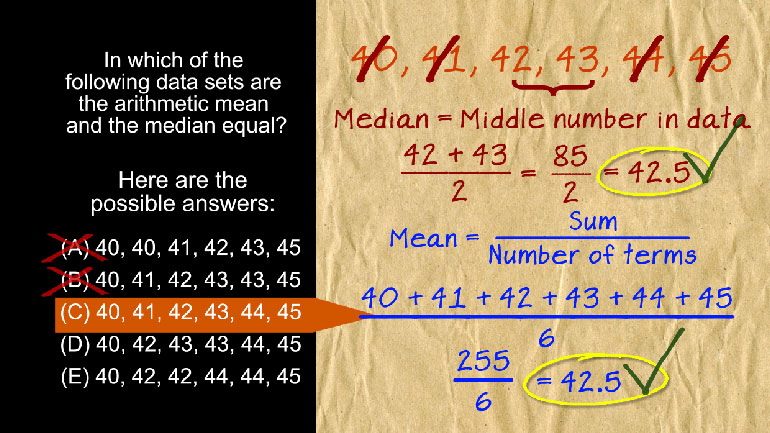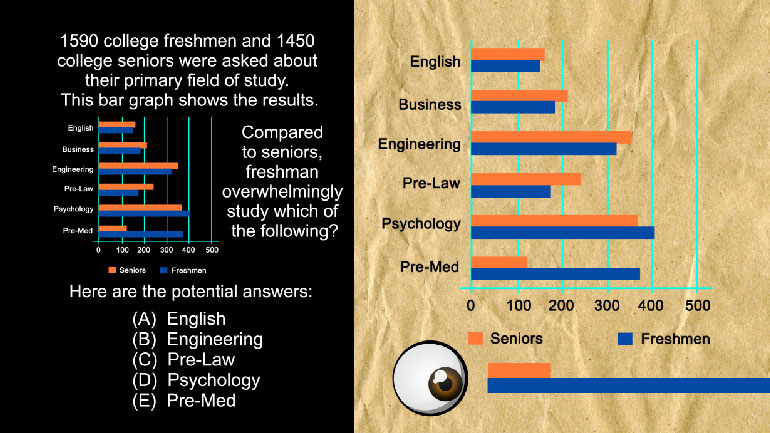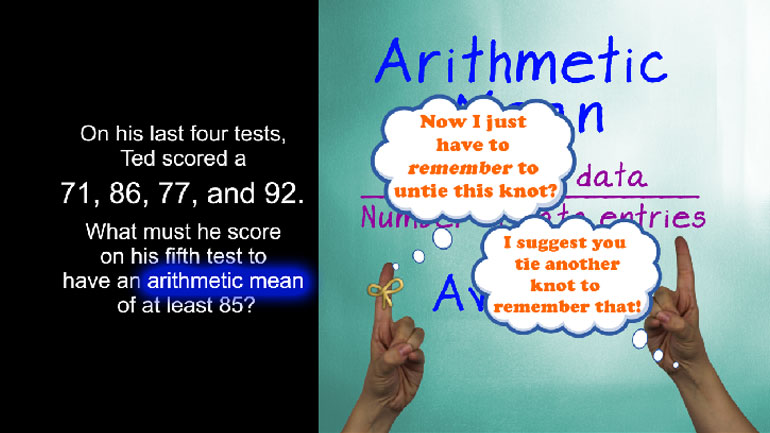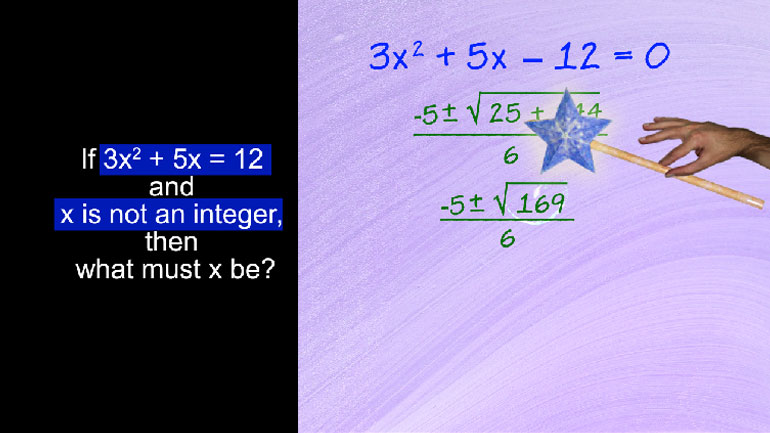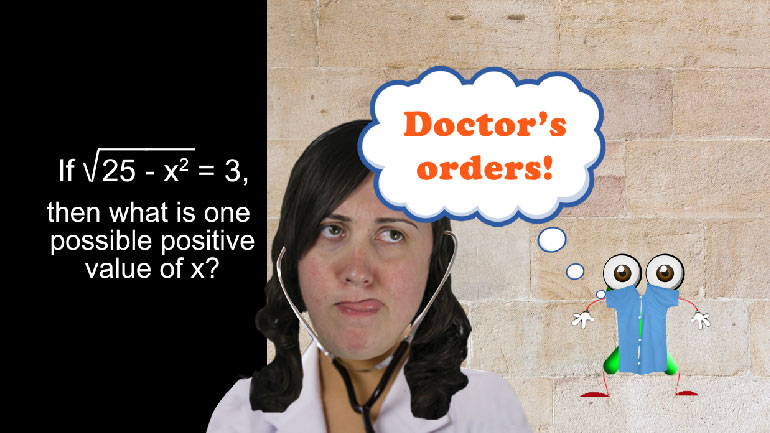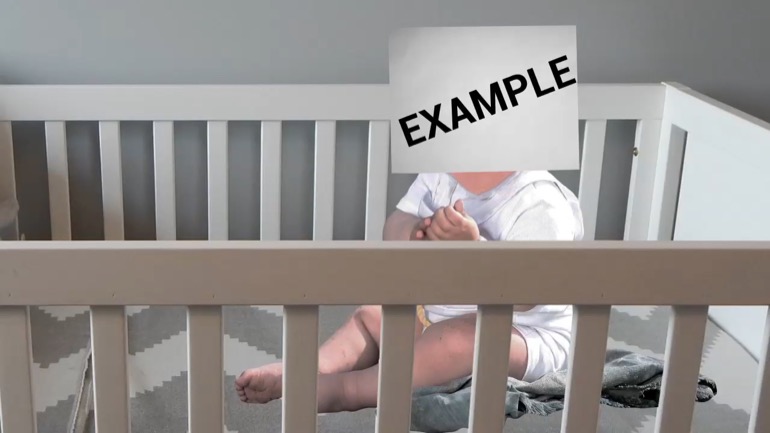ShmoopTube
Where Monty Python meets your 10th grade teacher.
Search Thousands of Shmoop Videos
Problem Solving and Data Analysis Videos 50 videos
A mole is a unit used in chemistry to measure atoms, molecules, electrons, and other particles in a given amount of substance. We know that the mol...
The table above estimates the population increase of a colony of bacteria over the course of five years. Which of the following best characterizes...
Employees of a candy company surveyed people of different ages and asked them their favorite flavor of candy. One of the surveyors chooses to send...
SAT Math 3.3 Algebra and Functions 182 Views
Share It!
Description:
SAT Math 3.3 Algebra and Functions
Transcript
- 00:02
And here's your shmoop du jour...
- 00:04
Justin rode his bike to school, pedaling at an average speed of 12 miles/hour.
- 00:08
When he rode his bike back home at a leisurely pace of 10 miles/hour, it took him an extra 15 min.
- 00:14
How far is his school from his home?
- 00:17
And here are the potential answers...
Full Transcript
- 00:20
OK, we want to find the distance between Justin's home and his school.
- 00:24
We know that he biked to school at 12 miles per hour, but we don't know how long it
- 00:28
took him to get there. We'll call the time it takes him to bike there, x.
- 00:33
Next, we know that when coming home, he biked at only 10 miles per hour.
- 00:38
And it took him 15 minutes longer than before.
- 00:43
We can take the old time, add 15 minutes to it, and get the new time.
- 00:48
But wait.
- 00:48
His velocity is given in miles per hour, and the extra time is in minutes.
- 00:54
The units don't match up.
- 00:55
Remember that 60 minutes are in an hour, and 15 minutes is .25, or a quarter of an hour.
- 01:01
Now, we can set up equations that help us solve this problem.
- 01:04
We'll start with biking to school.
- 01:06
We know that velocity is equal to the distance Justin travels divided by
- 01:09
the time it takes him to travel that distance. His velocity is 12 miles per hour.
- 01:14
We get the equation 12 = d (distance) / x (time).
- 01:18
Okay, now biking home.
- 01:20
We get 10 = d over the quantity x + .25.
- 01:26
We have two equations, and two variables.
- 01:28
Sounds a little like we have to solve a system of equations.
- 01:32
By isolating x in the first equation, we get x = d/12.
- 01:35
We can then plug x into our second equation, like this.
- 01:39
We multiply both sides by d/12 + .25, and we get 10 times d/12 + .25 = d.
- 01:47
Distributing in the 10 we get 10/12 d + 2.5 is equal to d.
- 01:54
We then subtract 10/12d from both sides to get 2/12 d,
- 01:59
which we can simplify to 1/6 d is equal to 2.5.
- 02:03
Finally, multiplying both sides by 6, and we get that d is equal to 15 miles.
- 02:08
So our answer is (E).
Related Videos
SAT Math 2.1 Geometry and Measurement. What is the measure of angle z in terms of x and y?
In 2014, the unemployment rate of one county in California was 7%. In another county, the unemployment rate was 11%. Which of the following express...
Angela is making cookies for a bake sale. She expects each batch of her cookies to sell for $40. It costs her $10 to make one batch of cookies, and...
